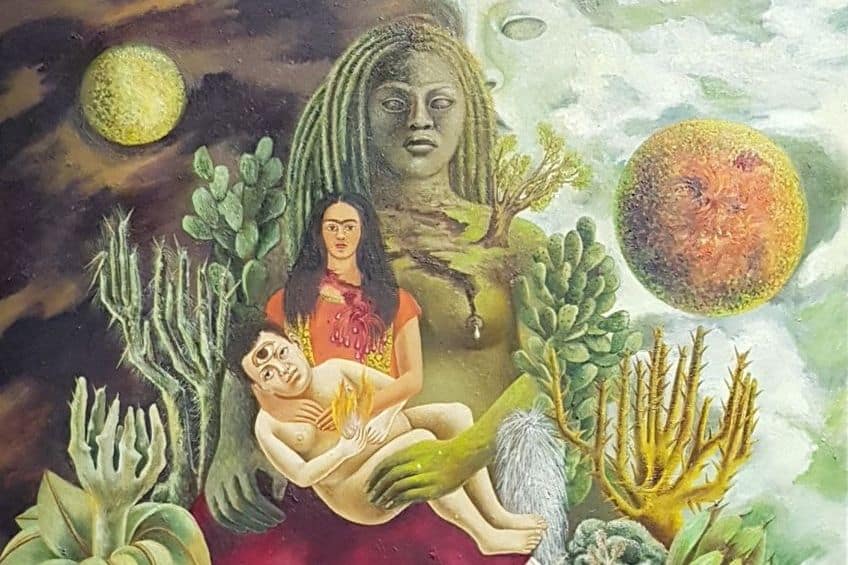Frida Kahlo Quotes – Famous Quotes by Frida Kahlo
Frida Kahlo is a Mexican artist who gained global recognition for her original and famous paintings that depicted her physical and emotional pain, as well as her unique perspective on the world. Despite the many challenges she faced, including a near-fatal accident and chronic health problems, Kahlo persevered and became an icon in the art world. Beyond her artwork, Kahlo is also known for her feminist activism and her outspoken views on the role of women in society. This article will explore the significance of Frida Kahlo through her own words, highlighting some of her most famous feminist quotes that continue to inspire women around the world today. Through an analysis of Frida Kahlo’s quotes, we will explore the questions: “why is Frida Kahlo important?”, and “why was Frida Kahlo famous?”.
Contents
Frida Kahlo: A Feminist Icon
Frida Kahlo, the Mexican painter, is considered a feminist icon due to her unwavering commitment to challenging traditional gender roles and societal expectations through her art and personal life. Kahlo’s self-portraits often depicted her in ways that subverted conventional ideals of beauty and femininity, showcasing her own unique style and perspective.

Her paintings also frequently addressed issues of gender inequality, social injustice, and female sexuality. Moreover, Kahlo’s writings, including her personal diary and letters to friends, revealed her profound understanding of the complexities of being a woman in a patriarchal society, and her willingness to speak out against the injustices faced by women. Her influence on women around the world can be seen in the countless feminist movements that continue to be inspired by her work and life to this day.
Artist Abstract of Frida Kahlo: What Was Frida Kahlo Famous For?
Frida Kahlo is one of the most celebrated artists of the 20th century, known for her unique style, raw emotion, and pioneering approach to feminist art. Her work explores themes of identity, pain, and resilience, using vivid colors, intense symbolism, and a sense of raw emotion to convey her own experiences and emotions. Kahlo’s ability to create deeply personal and introspective paintings has made her a symbol of strength and resilience for many women around the world. Additionally, her unwavering commitment to challenging traditional gender roles and societal expectations through her art and personal life has made her a role model and feminist icon.
Kahlo’s impact on the art world is profound and enduring, inspiring numerous artists and continuing to be studied and admired to this day.
Frida Kahlo’s Feminist Quotes
Frida Kahlo was a pioneering feminist artist whose work and writings explored themes of gender, identity, and societal expectations. Her diary writings are described as light-hearted and humorous. This undying spirit of Kahlo can also be seen as a revolutionary act of bravery. By not being defeated by the various struggles life threw at her, Kahlo is an example of the strength and creative spirit of women. Her diary was published in 1995 and records her memories and everyday thoughts between 1944 and 1954. Her struggles with love, politics, and physical health are illustrated in this deeply personal text. Below, we will analyze a few of Frida Kahlo’s feminist quotes, the context in which they were written, and how they have impacted people after her death.
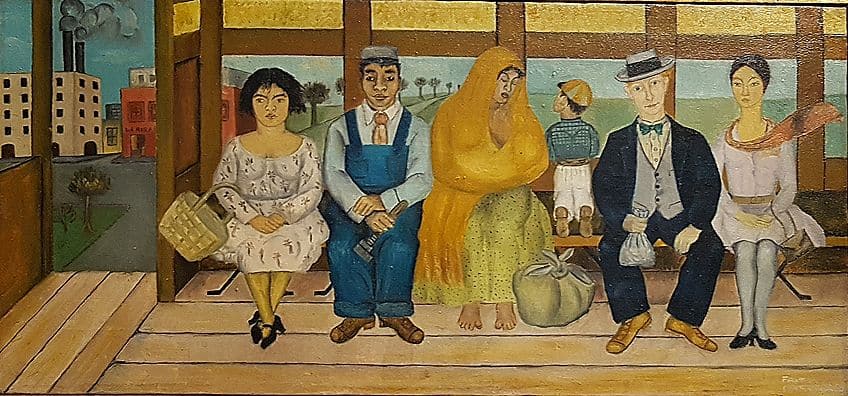
The Intersections of Race and Gender
The quote, “Sexism and racism are parallel problems. You can compare them in some ways, but they’re not at all the same. But they’re both symptoms inside the white male power structure,” by Frida Kahlo, is a powerful and insightful analysis of the intersections of race and gender in the struggle for social justice. As a Mexican woman of indigenous descent, Kahlo faced numerous challenges and discrimination in her personal and professional life. Her work often dealt with themes of identity, intersectionality, and resistance against dominant power structures. This quote, in particular, highlights the ways in which sexism and racism are interconnected, and how they both serve to uphold the power of white men.
Kahlo’s observation is a feminist piece of writing because it exposes the ways in which patriarchy and white supremacy are linked and mutually reinforcing.
It acknowledges that the oppression of women cannot be separated from other forms of systemic oppression, including racism, colonialism, and capitalism. This quote serves as a powerful reminder of the importance of intersectionality in feminist activism and highlights the ways in which women’s struggles for equality intersect with other social justice movements. Kahlo’s words have continued to impact people long after her death, inspiring generations of feminists and activists to recognize the intersections of oppression and work towards dismantling systems of power that benefit the few at the expense of the many. Her quote is a rallying cry for those who seek to challenge the status quo and create a more just and equitable society. It is a testament to Kahlo’s enduring legacy as an artist, activist, and advocate for social justice.
Exploring Her Own Identity
The quote, “I am my own muse, I am the subject I know best. The subject I want to know better,” by Frida Kahlo, is a testament to her self-awareness and her unwavering commitment to exploring her own identity through her art. As a female artist in a male-dominated field, Kahlo faced significant challenges and prejudice, but she refused to be defined by the expectations of others. This quote is considered a feminist piece of writing because it challenges the traditional notion of the male artist as the creative genius and the female artist as the passive muse. Kahlo’s words affirm the power of self-knowledge and self-exploration in the creative process and highlight the importance of representing one’s own experiences and perspective in art. This quote serves as a reminder of the need for women to assert their agency and take control of their own narratives, rather than being relegated to the sidelines as objects of male desire.
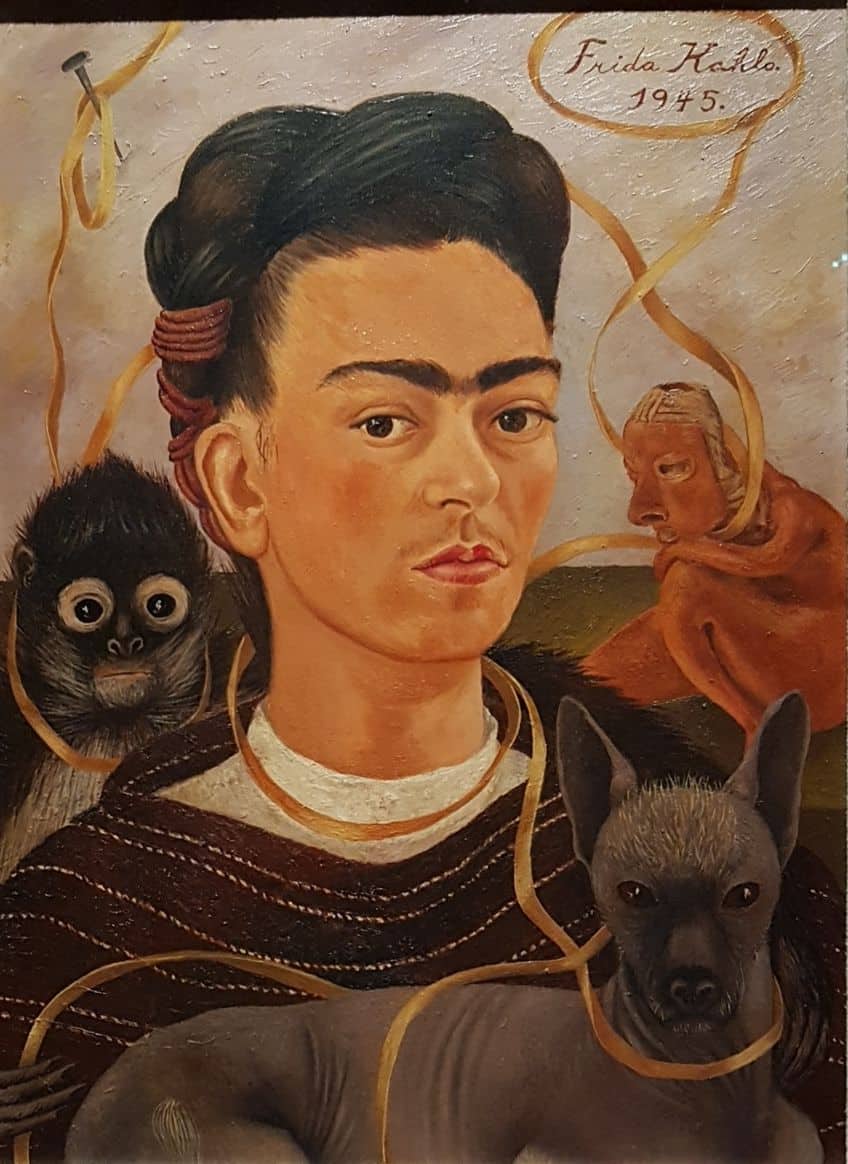
Kahlo’s quote has had a significant impact on feminist art and on the broader feminist movement. It has inspired countless women to explore their own identities and experiences through their art and to reject the traditional gender roles that have long been imposed on women. Her words serve as a call to action for women to take ownership of their own stories and assert their voices in the world. In summary, Kahlo’s quote is a powerful statement of self-affirmation and a challenge to the dominant narratives of gender and art. It is a testament to her courage, resilience, and creativity, and a call to women everywhere to embrace their own agency and power.
Doctors and Hospitals
“I am not sick. I am broken. But I am happy as long as I can paint.” This quote is considered a feminist piece of writing as it reflects Kahlo’s desire to challenge the patriarchal medical establishment, which often dismissed women’s pain as hysteria or psychological in nature. The quote was written in 1944, a year after Kahlo underwent spinal surgery and was confined to a bed for several months. Despite her physical pain and the medical establishment’s dismissal of her symptoms, she continued to paint and assert her identity as an artist.
After her death, the quote has become a symbol of female resilience and determination to challenge patriarchal institutions that marginalize women’s experiences.
More Frida Kahlo Quotes
Frida Kahlo was not only a talented artist but also a writer and an activist, using her words to convey her thoughts and feelings on important social and political issues. Below, we’ll examine a few of her famous quotes, the paintings she was creating at the time, what was happening in her personal life, and how the quote impacted people after her death.

A Being Alone Quote by Frida Kahlo
“I paint self-portraits because I am so often alone, because I am the person I know best.” Kahlo wrote this quote in 1954, the same year she created her painting The Two Fridas. The quote reveals her desire to connect with herself through her art.
After her death, the quote has become a symbol of self-discovery and self-expression, inspiring many people to use art as a way to connect with themselves and express their innermost feelings.
A Pain Quote by Frida Kahlo
“Feet, what do I need you for when I have wings to fly?” Kahlo wrote this quote in 1953, the same year she created her painting titled The Broken Column. The quote reveals Kahlo’s desire to transcend her physical limitations and rise above her pain. After her death, the quote has become a symbol of strength and resilience, inspiring countless people to overcome their own challenges.

A Quote About Reality vs. Dreams
“I never paint dreams or nightmares. I paint my own reality.” Kahlo wrote this quote in 1953, the same year she created her painting titled The Dream. The quote reveals Kahlo’s determination to face her reality head-on and to use her art as a way to confront her pain.
After her death, the quote has become a symbol of authenticity and honesty, inspiring people to be true to themselves and to embrace their own realities.
Original Famous Frida Kahlo Paintings
Frida Kahlo is undoubtedly one of the most influential and iconic artists of the 20th century. Her paintings, characterized by their vivid colors, surreal imagery, and deeply personal subject matter, have captivated audiences around the world. Despite a lifetime of physical and emotional pain, Kahlo’s art remains a powerful testament to the human spirit, as well as a celebration of Mexican culture and identity. In this section of the article, we will take a closer look at some original famous Frida Kahlo paintings, exploring their themes, techniques, and cultural significance. Through a visual analysis of her work, we will gain a deeper appreciation of the life and art of this legendary artist.
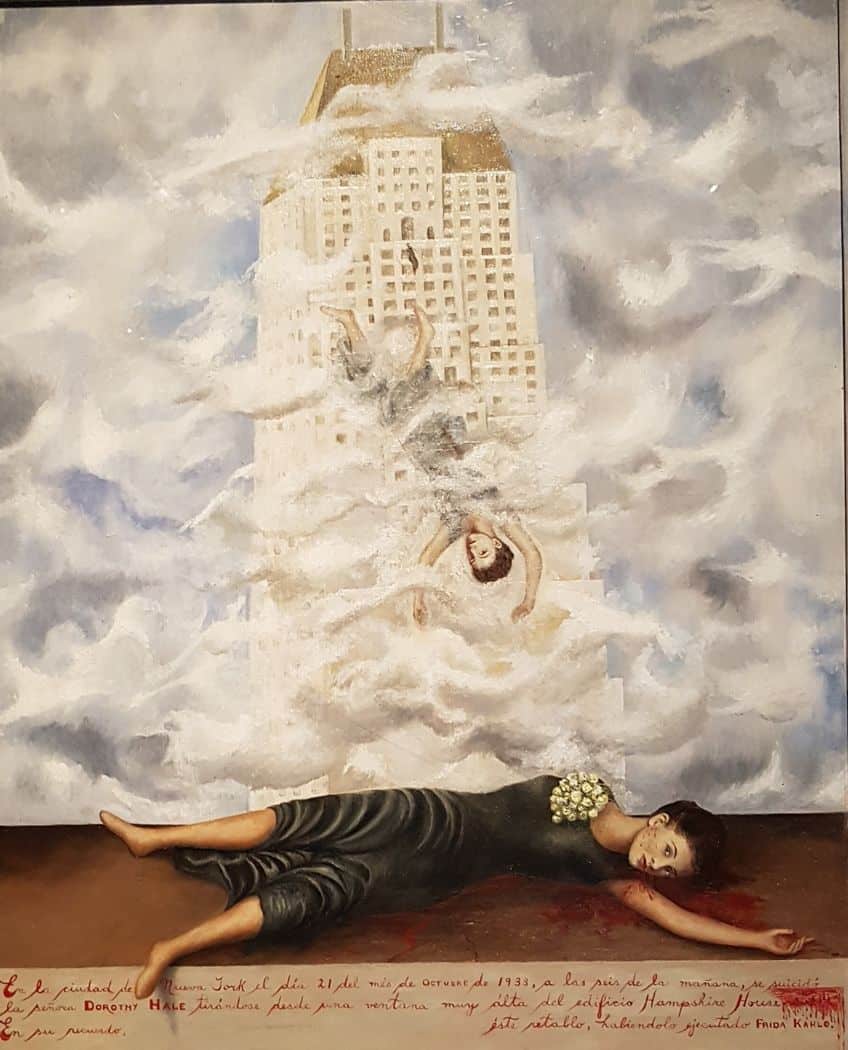
The Two Fridas (1939)
| Date of Artwork | 1939 |
| Medium | Oil on canvas |
| Dimensions (cm) | 174 x 173 |
| Where It Is Located | Museo Dolores Olmedo, Xochimilco, Mexico City, Mexico |
The Two Fridas, painted in 1939 by the Mexican artist Frida Kahlo, is a striking and deeply personal work that has become an iconic piece of art history. This painting depicts two versions of Kahlo, both seated side by side, with their hands held together. The image is at once surreal and realistic, with each Frida wearing traditional Mexican clothing and each holding a symbolic object. The painting measures 173 cm x 173 cm and is oil on canvas. The background is a stormy sky that contrasts with the bright white of the two Fridas’ clothing. The scene is enclosed by a gold frame, which is typical of Mexican retablo paintings. The painting is currently held in the Museum of Modern Art in Mexico City.
The two Fridas are the focal point of the painting. The Frida on the left is dressed in European clothing and is wearing a full skirt and a blouse with ruffles.
Her hair is pulled back in braids. This version of Frida is holding a pair of surgical scissors, which is an allusion to her multiple surgeries and her pain. The scissors seem to be cutting into her chest, and a small trickle of blood can be seen on her blouse The Frida on the right is wearing informal traditional clothing and is dressed in a white wedding dress. This version of Frida is holding a small portrait of Diego Rivera, her husband, who she was divorcing at the time of the painting. The portrait is placed over her heart, and her veins seem to connect with the veins in the portrait, suggesting a deep emotional connection between the two.
The two Fridas are depicted with their hearts exposed, and their veins are shown connecting them. This image represents the duality of Frida’s identity, with one side representing her traditional Mexican heritage, and the other her European heritage. It also alludes to the emotional and physical pain that Frida experienced throughout her life. The stormy sky in the background of the painting is symbolic of the emotional turmoil that Frida was experiencing at the time of the painting.
The gold frame surrounding the painting is typical of Mexican retablo paintings and is a nod to Kahlo’s Mexican heritage. It also suggests the idea of the painting being a sacred object, which is typical of religious paintings.
In conclusion, The Two Fridas by Frida Kahlo is a deeply personal and emotive painting that explores the duality of Kahlo’s identity and the emotional and physical pain that she experienced throughout her life. The painting is a masterpiece of surrealism and realism, and it is a testament to Kahlo’s skill as an artist and her ability to express her emotions and experiences through her art. The painting has become an iconic piece of art history and is an essential part of Kahlo’s legacy.
The Dream (1940)
| Date of Artwork | 1940 |
| Medium | Oil on canvas |
| Dimensions (cm) | 74 x 98.5 |
| Where It Is Located | Nesuhi Ertegun Collection, New York City, United States |
The Dream, painted in 1940 by the Mexican artist Frida Kahlo, is a visually stunning work that explores the complex and layered nature of the human psyche. This painting depicts a self-portrait of Kahlo lying on a bed in a barren landscape, surrounded by symbolic objects and creatures. The painting is a surrealistic portrayal of the dream realm and the subconscious mind. The painting measures 30.7 cm x 34 cm and is oil on metal. The background is a desolate landscape that suggests a feeling of seclusion and loneliness. The bed on which Kahlo lies is ornate and adorned with a richly patterned bedspread.
The painting is currently held in the Dolores Olmedo Museum in Mexico City.
The central figure in the painting is Kahlo herself, depicted lying on a bed with her eyes closed. Her body is covered in a white sheet, and her face is turned away from the viewer. Her hair is flowing freely. This image suggests the idea of life and growth, and it serves to contrast with the barren landscape in the background. Surrounding Kahlo are various objects and creatures that symbolize different aspects of the dream world and the subconscious mind. The Dream is a painting that is rich in symbolism and meaning. It is a testament to Kahlo’s skill as an artist and her ability to express the complexities of the human psyche through her art.
The painting is a powerful portrayal of the dream world and the subconscious mind, and it serves as a reminder of the importance of exploring and understanding the depths of our own psyche. The Dream is a masterpiece of surrealist art and an essential part of Kahlo’s legacy.
The Broken Column (1944)
| Date of Artwork | 1944 |
| Medium | Oil on masonite |
| Dimensions (cm) | 39.8 × 30.6 |
| Where It Is Located | Museo Dolores Olmedo, Xochimilco, Mexico City, Mexico |
The Broken Column is a deeply personal and evocative painting by Frida Kahlo that captures her struggle with chronic pain and her determination to transcend her physical limitations. In this visual analysis, we will examine the painting’s composition, use of symbolism, and emotional impact. The painting depicts Kahlo as a smashed column, with her torso split open to expose a crumbling structure. Her spine is represented by a broken Ionic column, with nails piercing her flesh and an iron brace holding her upright. Her face is contorted with pain, and tears stream down her cheeks. In the background, a barren landscape with a stormy sky suggests a sense of isolation and turmoil. The painting’s composition is both visually striking and emotionally charged.
The use of strong vertical and diagonal lines creates a sense of tension and instability, while the shattered column symbolizes Kahlo’s fragmented sense of self. The nails piercing her flesh and the iron brace symbolize the physical pain and emotional trauma that she endured throughout her life.
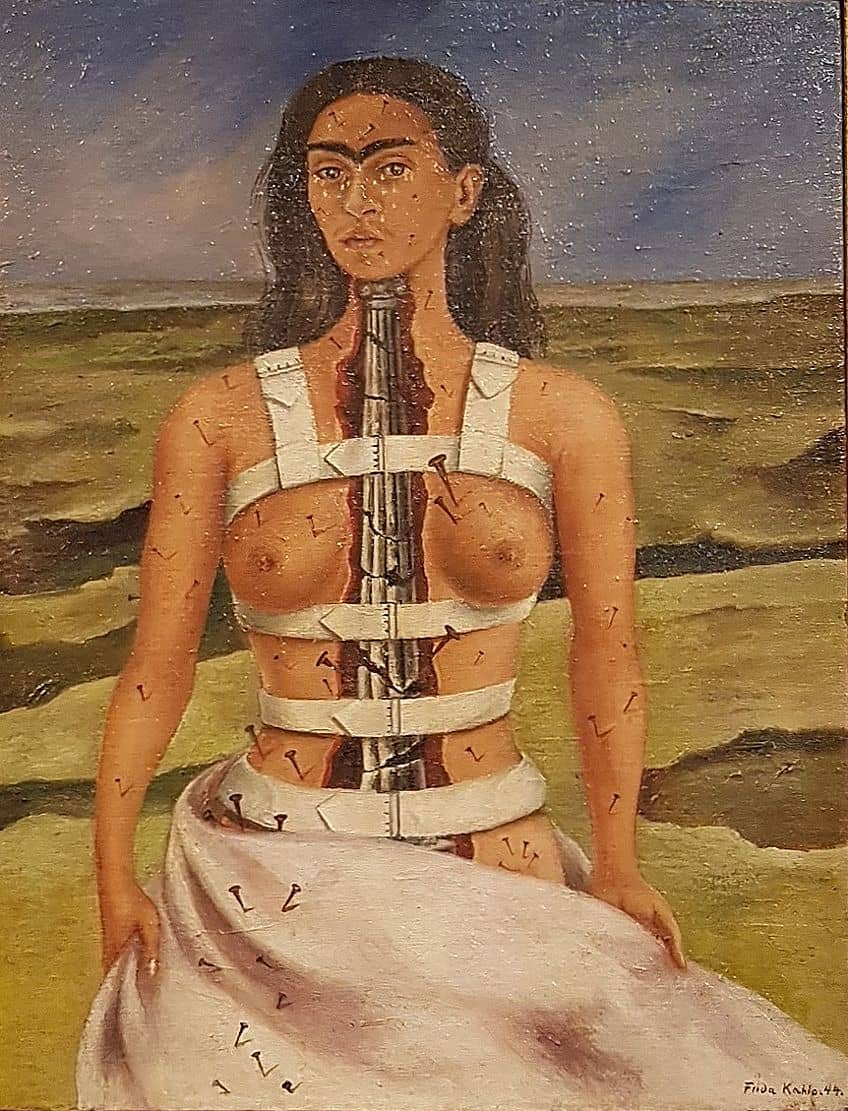
Kahlo’s use of color is also significant. Her use of bright, vivid colors in her clothing and jewelry contrasts with the muted, earthy tones of the background, suggesting a sense of defiance and resilience. The blue sky and the white of the column also evoke a sense of hope and transcendence. The Broken Column is a powerful testament to Kahlo’s resilience and determination to overcome physical and emotional pain. The painting has become an iconic symbol of female empowerment and a call to challenge societal expectations and limitations placed on women. It is a testament to the enduring impact of Kahlo’s work and her ability to capture the complexities of the human experience through her art.
In conclusion, Frida Kahlo’s famous quotes reveal her deeply personal and introspective approach to art and life. Frida Kahlo’s quotes continue to inspire people around the world to face their own challenges with strength and resilience, to use art as a means of self-expression and self-discovery, and to embrace their own realities with honesty and authenticity.
Frequently Asked Questions
Why Is Frida Kahlo Important?
Frida Kahlo is important because of her significant contribution to the art world and her profound impact on feminist movements. As an artist, Kahlo’s paintings were unique and original, reflecting her own experiences and emotions. Her works were characterized by vivid colors, intense symbolism, and a sense of raw emotion. Additionally, Kahlo’s unwavering commitment to challenging traditional gender roles and societal expectations through her art and personal life has made her a role model for many women, and a feminist icon around the world.
What Was Frida Kahlo Famous For?
Frida Kahlo was famous for her unique and original paintings that explored themes of identity, pain, and resilience. Her self-portraits were particularly notable, showcasing her own unique style and perspective on the world. Additionally, Kahlo’s paintings frequently addressed issues of gender inequality, social injustice, and female sexuality, making her a pioneering feminist artist. Her work has had a significant effect on the art world, inspiring countless artists and continue to be investigated and respected to this day.
Why Was Frida Kahlo Famous?
Frida Kahlo was famous because of her talent as an artist, and her unique style of painting that set her apart from her contemporaries. Her paintings were deeply personal and explored themes of pain, identity, and resilience in ways that had never been seen before. Additionally, Kahlo’s life story, including her near-fatal accident and tumultuous relationship with fellow artist Diego Rivera, added to her fame and notoriety. Furthermore, her outspoken views on women’s rights and gender inequality, combined with her unique artistic vision, made her a feminist icon and a role model for many women around the world.
Nicolene Burger, a South African multimedia artist and creative consultant, specializes in oil painting and performance art. She earned her BA in Visual Arts from Stellenbosch University in 2017. Nicolene’s artistic journey includes exhibitions in South Korea, participation in the 2019 ICA Live Art Workshop, and solo exhibitions. She is currently pursuing a practice-based master’s degree in theater and performance. Nicolene focuses on fostering sustainable creative practices and offers coaching sessions for fellow artists, emphasizing the profound communicative power of art for healing and connection. Nicolene writes blog posts on art history for artfilemagazine with a focus on famous artists and contemporary art.
Learn more about Nicolene Burger and about us.
Cite this Article
Nicolene, Burger, “Frida Kahlo Quotes – Famous Quotes by Frida Kahlo.” artfilemagazine – Your Online Art Source. March 23, 2023. URL: https://artfilemagazine.com/frida-kahlo-quotes/
Burger, N. (2023, 23 March). Frida Kahlo Quotes – Famous Quotes by Frida Kahlo. artfilemagazine – Your Online Art Source. https://artfilemagazine.com/frida-kahlo-quotes/
Burger, Nicolene. “Frida Kahlo Quotes – Famous Quotes by Frida Kahlo.” artfilemagazine – Your Online Art Source, March 23, 2023. https://artfilemagazine.com/frida-kahlo-quotes/.


